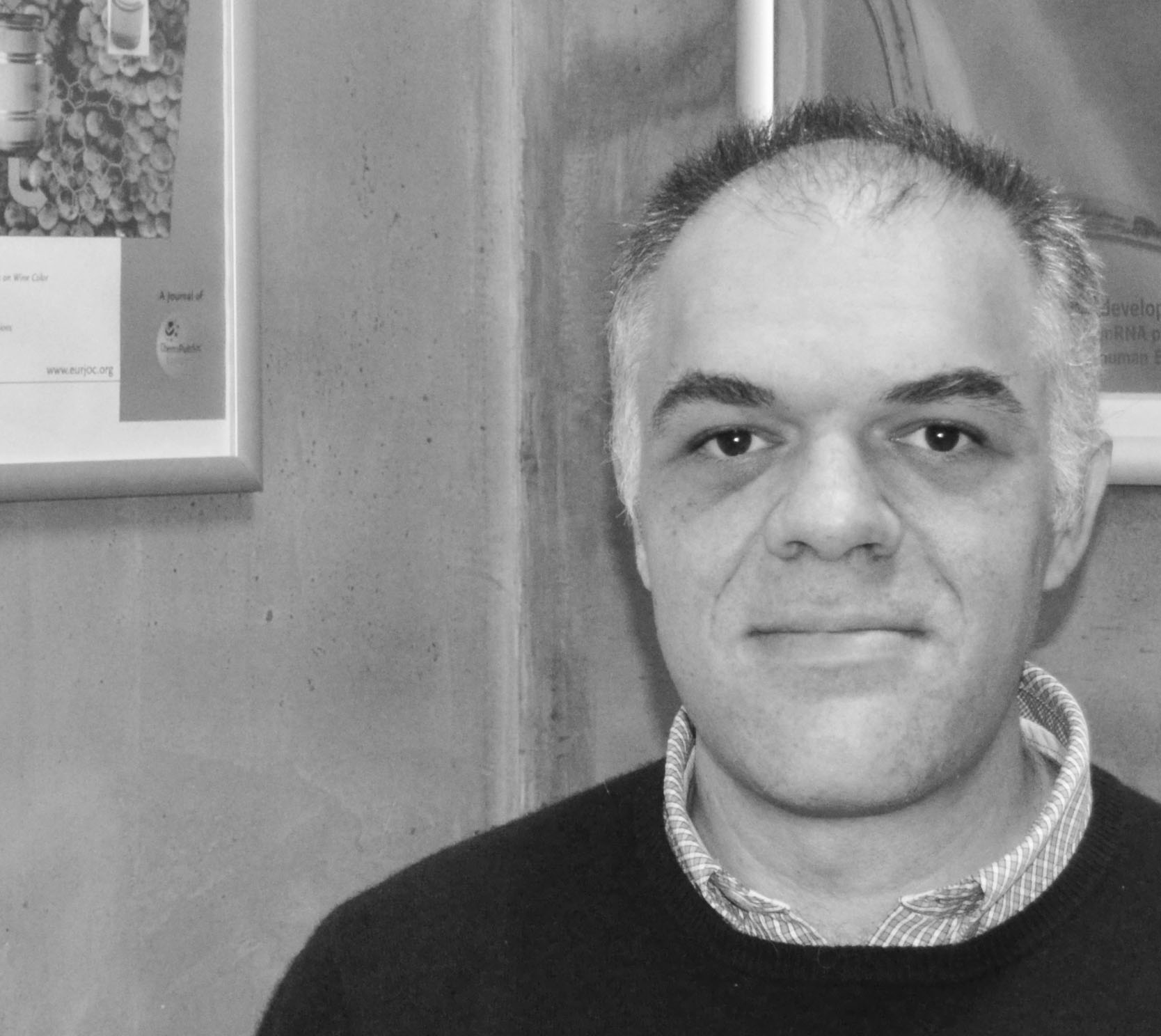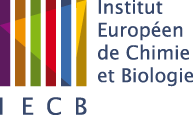 Dr. RĂ©mi Fronzes Dr. RĂ©mi Fronzes
Chargé de recherche, CNRS
This e-mail address is being protected from spambots. You need JavaScript enabled to view it
Tel: +33(0) 5 40 00 25 61
Bio
Rémi Fronzes (RF) has a long-term research experience in biochemistry and structural biology of macromolecular assemblies. He trained as a membrane protein biochemist during his PhD in Bordeaux (France). In 2005, he moved to Gabriel Waksman’s laboratory at the Institute of Structural and Molecular Biology in London (UK) to work as a postdoctoral research associate. In 2009, RF was appointed as a junior research scientist at the CNRS (Centre National de la Recherche Scientifique) and as a group leader at institut Pasteur, in Paris (France). In October 2009, he set up his independent research group at institut Pasteur. In 2011, RF was awarded a ERC (European Research Council) starting grant. In 2015, Rémi Fronzes was awarded a “Chaire d’excelence Senior” by the university of Bordeaux and Aquitaine regional Council. RF moved his research group to IECB and CNRS unit UMR 5234 "Microbiologie Fondamentale et Pathogénicité" in 2016.
Keywords / Expertises / Techniques
Structural biology, Cryo-electron microscopy, X-ray crystallography, Bacteriology, Bacterial virulence
Summary
The group “Structure and function of bacterial nanomachines” aims at answering a simple question: « How macromolecules are transferred through the bacterial cell envelope? »
We study the structure and function of several bacterial secretion systems as well as of the apparatus involved in bacterial transformation (DNA uptake and recombination).
Over the years, we have been interested in the structure of the Type 4, Type 6 and Type 8 secretion systems. These systems are involved in the transfer of proteins through the cellular envelope of Gram-negative bacteria.
We are also very interested in understanding how DNA can be uptaken and recombined in the bacterial genome during bacterial transformation. Natural genetic transformation, first discovered in Streptococcus pneumoniae by F. Griffith in 1928, is observed in many Gram-negative and Gram-positive bacteria. This process promotes genome plasticity and adaptability. In particular, it enables many human pathogens such as Streptococcus pneumonia, Neisseria gonorrhoeae or Vibrio Cholerae to acquire resistance to antibiotics and/or to escape vaccines through the binding and incorporation of new genetic material. While it is well established that this process requires the binding, internalization of external DNA and its recombination in the bacterial genome, the molecular details of these steps are unknown. In this project, we aim at acquiring a detailed understating of each of these steps. We discovered a new appendage at the surface of S. pneumoniae cells and showed that this appendage is similar in morphology and composition to appendages called Type IV pili commonly found in Gram-negative bacteria. We demonstrated that this new pneumococcal pilus is essential for transformation and that it directly binds DNA (PLOS Pathogens 2013 and 2015). We are also actively studying the DNA translocation and recombination in tight collaboration with Patrice Polard’s team in Toulouse (France).
Selected publications
- Bacterial transformation: ComFA is a DNA-dependent ATPase that forms complexes with ComFC and DprA.Diallo A, Foster HR, Gromek KA, Perry TN, Dujeancourt A, Krasteva PV, Gubellini F, Falbel TG, Burton BM, Fronzes R*. Mol Microbiol. 2017 Jun 15. doi: 10.1111/mmi.13732. ]
- Bacterial RadA is a DnaB-type helicase interacting with RecA to promote bidirectional D-loop extension.Marie L, Rapisarda C, Morales V, Bergé M, Perry T, Soulet AL, Gruget C, Remaut H, Fronzes R, Polard P. Nat Commun. 2017 May 31;8:15638. doi: 10.1038/ncomms15638.Durand E, Nguyen VS Zoued A, Logger L, Péhau-Arnaudet G, Aschtgen MS, Spinelli S, Desmyter A, Bardiaux B, Dujeancourt A, Roussel A, Cambillau C*, Cascales E*, Fronzes R*. Biogenesis and structure of a type VI secretion membrane core complex Nature communications. 2015 Jul 30;523(7562):555-60. doi: 10.1038/nature14667.
- Laurenceau R, Krasteva P*, Ouarti S, Malosse Ch, Duchateau M, Chamot-Rooke J, Fronzes R*. Streptococcus pneumoniae Spirosomes Suggest a Single Type of Transformation Pilus in Competence. PLoS Pathog. 2015 Apr 15;11(4):e1004835.
- Low HH, Gubellini F, Rivera-Calzada A, Braun N, Connery S, Dujeancourt A, Lu F, Redzej A, Fronzes R*, Orlova E*, Waksman G*. Structure of a type IV secretion system. Nature, 2014 Apr 24;508(7497):550-3.
- Goyal P, V. Krasteva P, Nani Van Gerven, Gubellini F, Van den Broeck I, Troupiotis-TsaĂŻlaki A, Jonckheere W, PĂ©hau-Arnaudet G, S. Pinkner J, R. Chapman M, J. Hultgren S, Howorka S, Fronzes R*, Remaut H*. Structural and mechanistic insights into the bacterial amyloid secretion channel CsgG.Nature, 2014 Dec 11, 516:250-3. doi: 10.1038/nature13768.
- Laurenceau R, PĂ©hau-Arnaudet G, Baconnais S, Gault J, Malosse C, Dujeancourt A, Campo N, Chamot-Rooke J, Le Cam E, Claverys JP, Fronzes R*. A type IV pilus mediates DNA binding during natural transformation in Streptococcus pneumoniae.PLoS Pathog. 2013 Jun;9(6):e1003473.
- Chandran V#, Fronzes R#, Duquerroy S, Cronin N, Navaza J, Waksman G. Structure of the outer membrane complex of a type IV secretion system. Nature. 2009 Dec 24;462(7276):1011-5. doi: 10.1038/nature08588. Epub 2009 Nov 29.
- Fronzes R#,Schäfer E, Wang L, Saibil HR, Orlova EV, Waksman G.Structure of a type IV secretion system core complex. Science. 2009 Jan 9;323(5911):266-8. doi: 10.1126/science.1166101.
Research team
- Dr. RĂ©mi FRONZES Team Leader
- Dr. Esther MARZA Maître de Conférence (Université de Bordeaux)
- Pr. Jean-Paul BOURDINEAUD Professeur (Université de Bordeaux)
- Dr Chiara Rapisarda, post-doctoral Fellow
- Thomas Perry, PhD Student
- Pauline Pony, Master student
|
 Dr. RĂ©mi Fronzes
Dr. RĂ©mi Fronzes
 Research and training
Research and training

